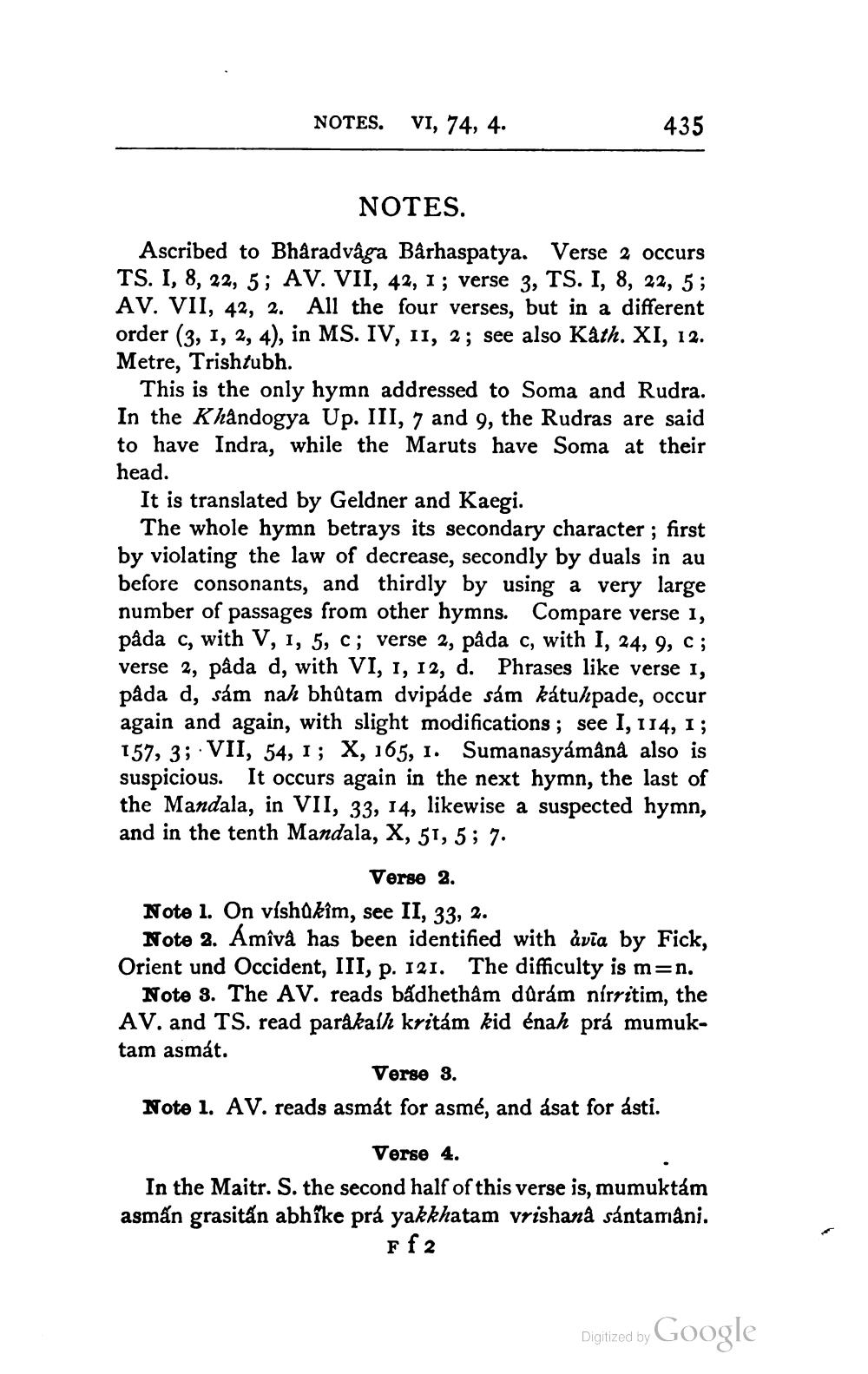________________
NOTES. VI, 74, 4.
435
NOTES.
Ascribed to Bharadvàga Barhaspatya. Verse 2 occurs TS. I, 8, 22, 5; AV. VII, 42, 1; verse 3, TS. I, 8, 22, 5; AV. VII, 42, 2. All the four verses, but in a different order (3, 1, 2, 4), in MS. IV, 11, 2; see also Kath. XI, 12. Metre, Trishtubh.
This is the only hymn addressed to Soma and Rudra. In the Khandogya Up. III, 7 and 9, the Rudras are said to have Indra, while the Maruts have Soma at their head.
It is translated by Geldner and Kaegi.
The whole hymn betrays its secondary character ; first by violating the law of decrease, secondly by duals in au before consonants, and thirdly by using a very large number of passages from other hymns. Compare verse 1, pâda c, with V, 1, 5, c; verse 2, pâda c, with I, 24, 9, C; verse 2, pâda d, with VI, 1, 12, d. Phrases like verse 1, pada d, sám nah bhatam dvipáde sám kátuhpade, occur again and again, with slight modifications ; see I, 114, 1; 157, 3; VII, 54, 1; X, 165, 1. Sumanasyámânâ also is suspicious. It occurs again in the next hymn, the last of the Mandala, in VII, 33, 14, likewise a suspected hymn, and in the tenth Mandala, X, 51, 5; 7.
Verse 2. Note 1. On víshokim, see II, 33, 2.
Note 2. Amîvà has been identified with avia by Fick, Orient und Occident, III, p. 121. The difficulty is m=n.
Note 3. The AV. reads bádhethâm důrám nirritim, the AV. and TS. read paråkalk kritám kid énah prá mumuktam asmát.
Verse 3. Note 1. AV. reads asmát for asmé, and ásat for ásti.
Verse 4. In the Maitr. S. the second half of this verse is, mumuktám asmấn grasitán abhske prá yakkhatam vrishanà sántamani.
Ff2
Digized by Google




